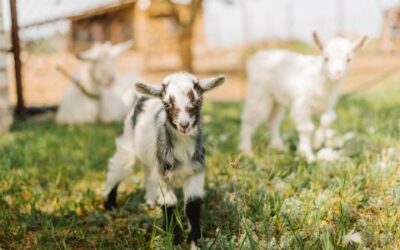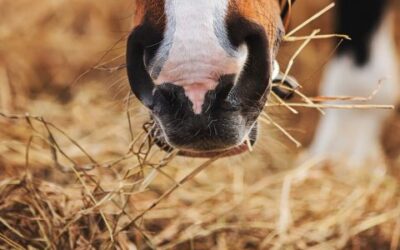For Older Horses, Overall Health Begins with the Teeth
Horses, like people, are living longer, and age-related health issues have increasingly become part of equine health management. While some dental issues can be business as usual, others require an expert eye to identify, treat, and maintain comfortable, effective eating at age 3 or 33. For horses, entering elderhood can be done gracefully without leaving good health, dental or otherwise, behind.
“Dental health is an ongoing concern, both for the younger horses and seniors,” Dr. David A. Jefferson, DVM, of Maine Equine Associates in New Gloucester, Maine told the Lucerne Farms Horse Heath Blog. Dr. Jefferson sees many older horses as part of his practice, and he focuses on developing customized programs for seniors to meet their individual needs. “We provide checkups along with yearly vaccinations, for example,” he said, “so typical dental procedures, from pulling wolf teeth to floating teeth that have become overgrown, becomes just part of regular maintenance.”
Often, recommendations at Maine Equine Associates will focus on getting proper nutrition – a process of grazing, grinding, and digestion. Adequate chewing is the first step in the digestive process. Chewing generates saliva (a horse produces up to 3 gallons of saliva per day), which has a buffering effect on food that helps aid amino acids be extracted once they reach the stomach. But as a horse ages, the digestive system becomes less effective at extracting needed nutrients, an effect that can be traced to the teeth.
Maintaining Good Dental Health
Horses of all ages are challenged with today’s realities of care. With its elongated head made to accommodate the needs of continual pasture grazing (incisors to shear off forage, molars to grind the feed, and teeth that continue to grow well into a horse’s twenties) the horse finds itself in a very different world than the one it evolved for. When grazing time is limited and enclosure time is long, teeth can develop sharp edges. For the senior horse, these changes can inhibit proper chewing.
Anatomy of the Horse’s Mouth
Horses have two groups of teeth: incisors and canine teeth are in one group, and wolf teeth, premolars and molars are in the second. Male horses generally have 40 teeth by age 5, while female horses have between 36-40 at maturity, since not all mares develop canine teeth.

Incisors – the nipper teeth across the front of the horse’s mouth that function to bite off grasses and hay, and help in the chewing process.
Canine teeth – these teeth are a prehistoric throwback and basically serve no function in the equine mouth now.
Premolars and molars – the larger teeth at the back of the mouth used for crushing and grinding food.
Wolf teeth – also a prehistoric remnant, found right before the premolars. (Some horses have them and some horses don’t.)
See more about the horse’s mouth at Equinesearch.com
To avoid this harmful cycle, the cheek-teeth chewing area should be monitored, as teeth that get sharper on the outside can lacerate the cheek, requiring smoothing with a file, or floating. Teeth can also become loose, worn, or broken, causing pain during chewing. Pain can result in a horse either going off their feed or taking longer to eat, thereby getting fewer calories than their younger counterparts.
In addition to these common dental issues, Equine Odontoclastic Tooth Resorption and Hypercementosis, or EOTRH, may afflict the senior horse and cause extremely painful chewing. This age-related disease occurs when bone and tissue around the teeth break down, and the resulting accumulating food can cause infection. EOTRH can be diagnosed by veterinarians during regular dental care.
A Lifetime of Healthy Living
For some horses, evidence of dental problems is apparent. They may foam or salivate excessively, they may shake their head, or a foul smell might be detected coming from the mouth or nose, prompting a visit to the veterinarian. However, horses can often be stoic, and some adapt to their dental pain. An annual dental exam is square one for keeping problems at bay.
A diagnosis of dental issues may mean a horse’s longstanding diet of common long stem hay, for example, may be less than ideal, warranting more digestible protein and calcium sources such as shorter chopped forage or more calorie-dense food. Hay alternatives may be helpful when the horse’s mouth has maxillary cheek teeth that are cupped or expired – that is, they have lost the architecture that allow grinding – and horses with diminished chewing might benefit from grass, hay-alfalfa grass blends, or senior feeds that provide high protein or rice bran. Custom dietary changes can set a senior horse back on the road to comfortable living, said Dr. Jefferson. “Yesterday, I saw a horse that was 36 that looked like he was in his twenties,” he reported. “That is the product of very good health management.”




